Last Updated on April 9, 2024 by Aditya
Wondering how do aromatherapy diffusers work? These devices disperse essential oils into the air, using various methods to purify your space and potentially improve your health. Our guide will dive into the mechanics behind aromatherapy diffusers, including the pros and cons of each major type, to demystify their soothing effects.
Understanding How Essential Oil Diffusers Work, Their Varities and Their Benefits
The Science Behind Aromatherapy Diffusers
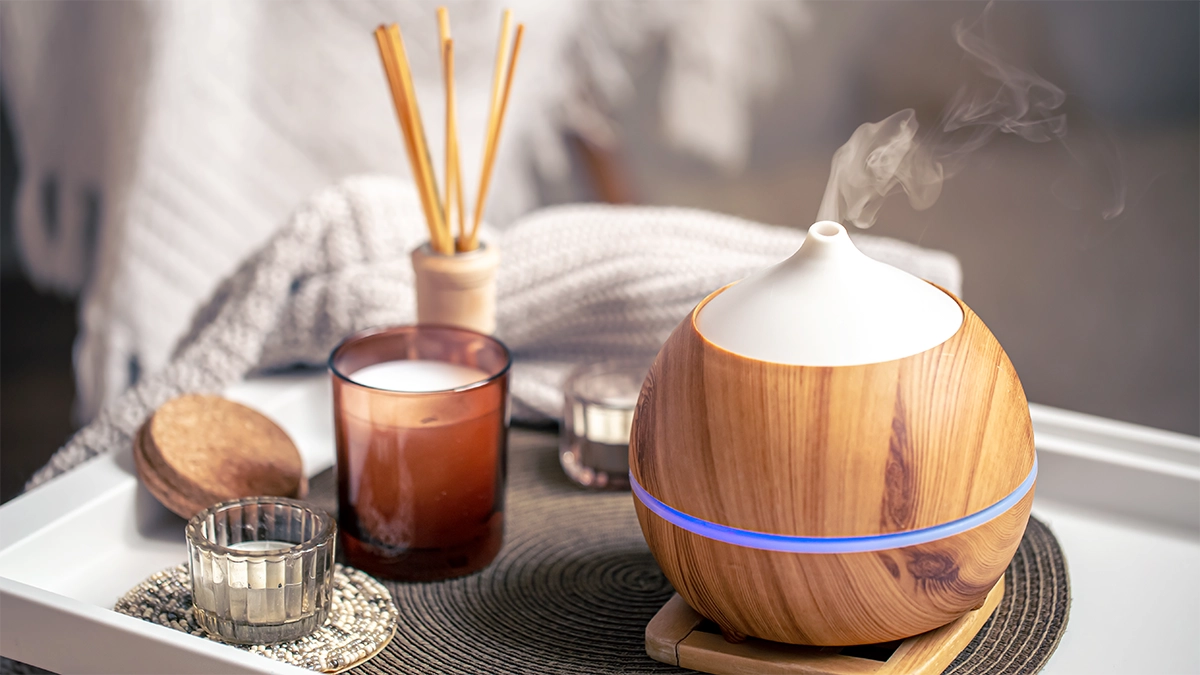
Aromatherapy diffusers are fascinating devices that use various methods to disperse essential oils into the air. The rapid and optimal diffusion ensures a consistent, pleasant aroma in any space. But how does this process work? To understand how an essential oil diffuser works, let’s dive into the mechanics behind these devices.
The Olfactory System
As you inhale the finely scented vapour from an aromatherapy diffuser, scent molecules reach your brain via the olfactory nerves, responsible for perceiving scents. These odors take a direct route to the limbic system, closely related to emotion and memory, creating an intimate connection between scents and the emotional brain.
Essential Oil Breakdown
Essential oil breakdown is a key part of how aromatherapy diffusers work. These devices break down essential oils into microscopic particles, which then become part of the mist or vapor emitted. They do this using various methods, such as ultrasonic vibrations, heat, evaporation or airflow.
This fine mist facilitates effortless inhalation and absorption through the respiratory system, amplifying the oils’ therapeutic benefits.
Types of Aromatherapy Diffusers
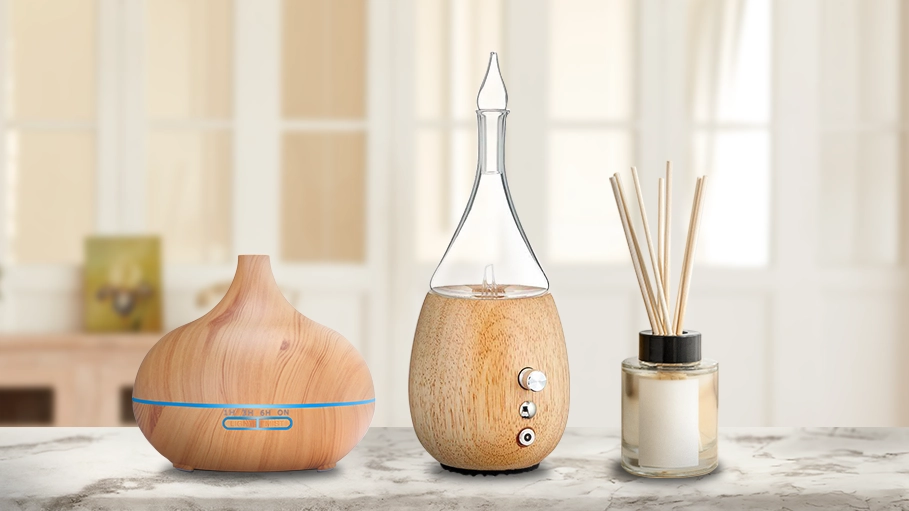
Aromatherapy diffusers come in various shapes and sizes, yet they can be broadly categorized into four main types:
- Ultrasonic diffusers
- Nebulizing diffusers
- Evaporative diffusers
- Heat diffusers
Each of these diffusers works slightly differently, and their unique mechanisms and benefits make them suitable for various uses.
| Type of Diffuser | How It Works | Advantages | Disadvantages |
|---|---|---|---|
| Ultrasonic | Uses ultrasonic vibrations to create a mist from a mixture of water and essential oils. | Quiet operation, efficient at dispersing essential oils with water, low cost. | Requires regular maintenance (daily rinsing and weekly descaling with white vinegar). Weak aroma. |
| Nebulizing | Uses pressurized air to disperse pure essential oils (only) into a fine mist without the need for water or heat. | Efficient and immediate diffusion, ideal for large spaces. Powerful mist can cover larger areas quickly. Strong aroma. | Higher maintenance due to its need for regular cleaning to remove oil residue. May use oils more quickly than other types. |
| Evaporative | Air blows through a filter or pad soaked with essential oils, causing the oils to evaporate and disperse. | Low maintenance, quiet operation. Simple and effective for small areas. | The intensity of the scent depends on airflow, making it less effective in larger spaces. Requires replacement of absorbent pads, reeds or wicks. |
| Heat | Uses heat (flame/electricity) to warm essential oils, causing them to evaporate into the air. | Simple operation, continuous diffusion over long periods. Can be inexpensive. | Heat may alter the chemical structure of essential oils, reducing their therapeutic benefits. May pose safety concerns in certain environments. Can be messy. |
Ultrasonic Diffusers
Ultrasonic diffusers, also known as ultrasonic diffuser devices, are loved for their quiet operation and efficient diffusion. This type of diffuser uses both ultrasonic sound waves and vibrations to break down a mixture of water and essential oils into a fine mist of water vapor that is then dispersed into the air, filling your space with an enticing aroma. The ability of ultrasonic diffusers to effectively disperse essential oils makes them the right choice for personal spaces like bedrooms or offices.
How do they work?
Ultrasonic diffusers use a disc vibrating at ultrasonic frequencies to create a mist from water and surface-floating essential oils, dispersing their aroma into the air.
But like any device, ultrasonic diffusers need some TLC. To maintain their performance, daily rinsing and weekly descaling with white vinegar are recommended. This little effort goes a long way in ensuring your diffuser continues to create a serene environment for you to relax and unwind.
Nebulizing Diffusers
Next on our list are nebulizing diffusers, powerful devices that use pressurized air to break down essential oils into ultra-fine particles without water, creating a potent mist. Nebulizing diffusers are known for their efficient and immediate diffusion, making them ideal for large spaces such as:
- lobbies
- retail stores
- spas
- gyms
How do they work?
Nebulizing diffusers work by using pressurized air to atomize pure essential oils (only), turning them into a fine mist that spreads their rich aroma quickly through the space.
While nebulizing diffusers are incredibly efficient, they require regular cleaning to ensure their proper functioning. Cleaning the diffuser with alcohol every 15 days or weekly if used heavily, helps remove oil residue and keeps your diffuser working at its best.
Evaporative Diffusers
Evaporative diffusers work a bit differently. This type of diffuser uses a fan to blow air through an oil-soaked pad or filter, causing the oil to evaporate and disperse into the room. Some “evaporative” diffusers rely on a solvent to “wick” the essential oils onto a reed or stick which then works to slowly disseminate a light aroma over a small location for a period of time.
The primary benefits of evaporative diffusers include their quiet operation and low maintenance, making them great for bedrooms, bathrooms and offices.
However, an evaporative diffuser comes with a few limitations. They require the regular replacement of the absorbent pads (or a reed diffuser), and the intensity of the scent is dependent on the airflow and the fan’s speed (or in the case of sticks, on the flow of air locally). But reed diffusers, with their quiet operation, simplicity and low cost, they remain a popular choice for many aromatherapy enthusiasts.
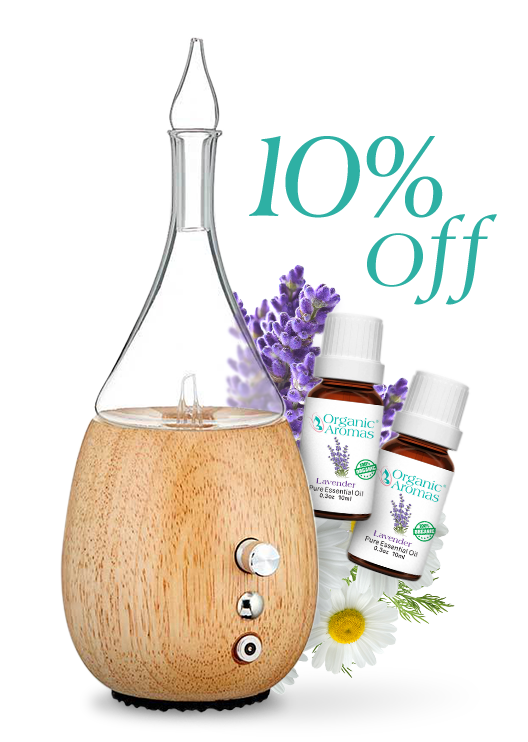
Join Now and Get a Coupon for %10 Off!
Please enable JavaScript in your browser to submit the form
Heat Diffusers
Last but not least, let’s explore heat diffusers. These devices work by gently warming the essential oils, causing them to evaporate and disperse into the air. By using gentle heat with essential oil diffusers to diffuse essential oils, they are appreciated for their ability to provide continuous diffusion over long periods, simple on/off controls, and affordability. Candle diffusers or those that require a wall plugin for example, can be a great addition to any space, enhancing the atmosphere with the benefits of essential oils. With oil diffusers being so versatile, it’s no wonder they are becoming increasingly popular.
However, a heat diffuser can alter the chemical structure and composition of essential oils, potentially affecting their therapeutic properties. Furthermore, they may introduce safety concerns in certain environments, particularly where open flames are not allowed. Regular maintenance, such as wiping them down with a damp cloth and using alcohol for stubborn residue, helps maintain their condition and ensures a safe and pleasant aromatherapy experience.
Benefits of Aromatherapy Diffusers
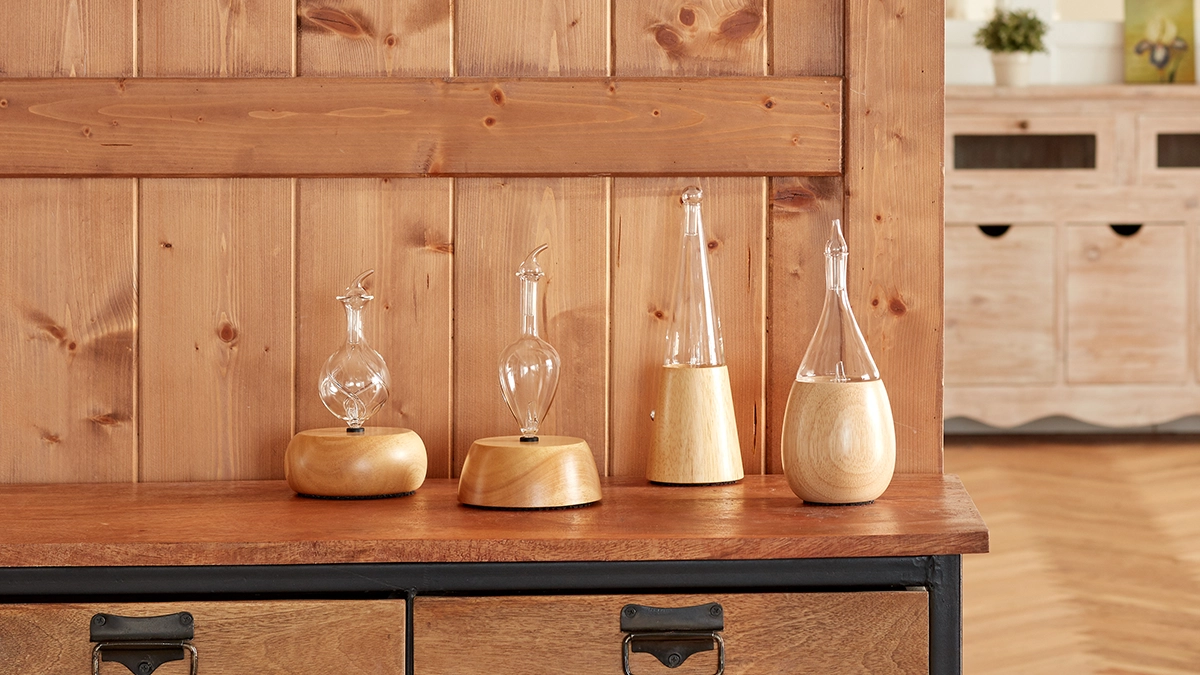
Aromatherapy diffusers offer a plethora of health and wellness benefits, including:
- Stress relief
- Improved sleep quality
- Mood enhancement/Calming effects
- Air purification
They are more than just devices dispersing incredibly aromatic oils.
We’ll now explore these benefits more thoroughly.
Stress Relief and Relaxation
In today’s fast-paced world, managing stress is crucial for our well-being. The good news is, aromatherapy diffusers can help. Diffusers stimulate the limbic system and foster a tranquil atmosphere, encouraging deep breathing and peace – crucial elements for stress management.
Improved Sleep Quality
Struggling with sleepless nights? An aromatherapy diffuser might be the solution you’re looking for. When diffused, essential oils like lavender can foster relaxation and enhance sleep quality.
Imagine falling asleep to the gentle scent of lavender, and waking up feeling refreshed and rejuvenated!
Mood Enhancement
Aromatherapy diffusers not only promote relaxation and improve sleep but also boost your mood. The right diffuser and blend of essential oils can create a more pleasant ambiance, lifting your spirits and making your space more enjoyable.
Whether you’re working, studying, or just relaxing at home, a diffuser can turn any ordinary room into a soothing sanctuary.
Air Purification
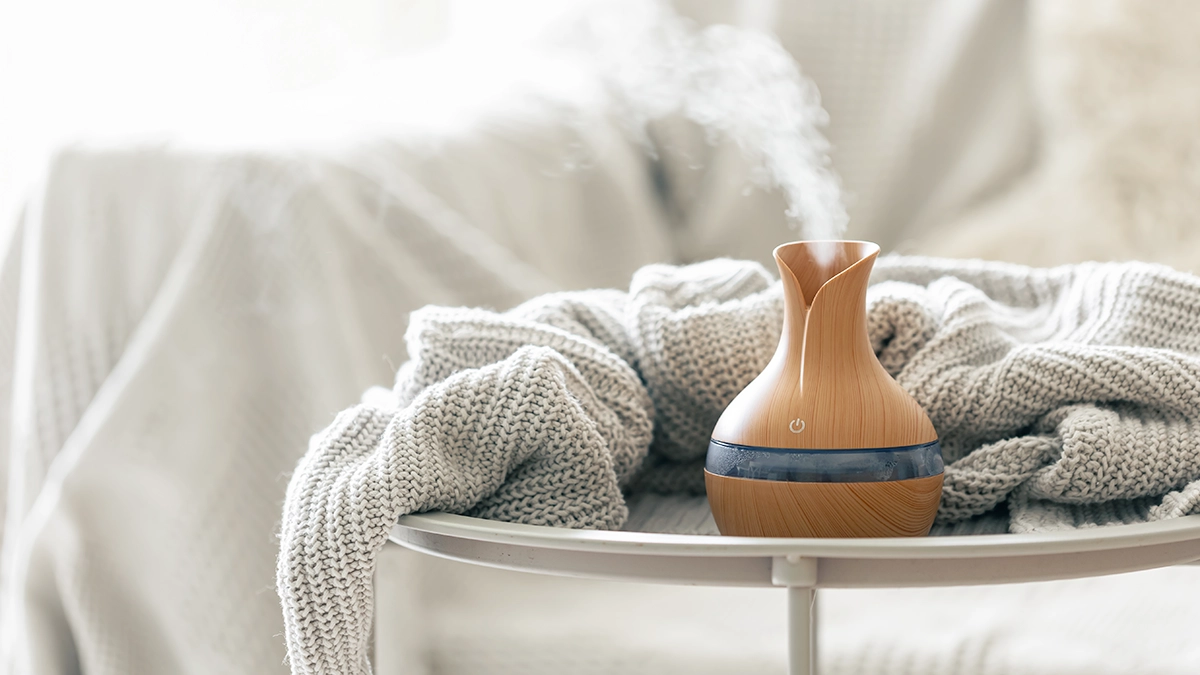
In addition to making your room smell good, aromatherapy diffusers also have the capacity to cleanse and purify the air. Certain essential oils contain cleansing molecules that can purify the air, combating airborne bacteria and promoting a healthier environment.
| Diffuser Type | Aroma Level (High/Low) | Price (High/Low) | Reliability (High/Low) | Flexibility/Usability |
|---|---|---|---|---|
| Ultrasonic | Medium to Low ✗ | Low ✓ | Medium to Low ✗ | Medium to Low ✗ |
| Nebulizing | High ✓ | High ✗ | High ✓ | High ✓ |
| Evaporative | Medium ✓ | Low ✓ | Medium ✓ | Low ✗ |
| Heat | Low ✗ | Low ✓ | Medium ✓ | Low ✗ |
Key Notes:
- Ultrasonic Diffusers: Diluted aroma level due to water use. Watch out for mold and use distilled water to prevent mineral deposits.
- Nebulizing Diffusers: High aroma level and flexibility. Can use oils quickly; requires regular cleaning.
- Evaporative Diffusers: Medium aroma level; depends on air flow. Needs periodic replacement of absorbent pads.
- Heat Diffusers: Low aroma level; risk of overheating. Not recommended for therapeutic use as heat can degrade essential oils.
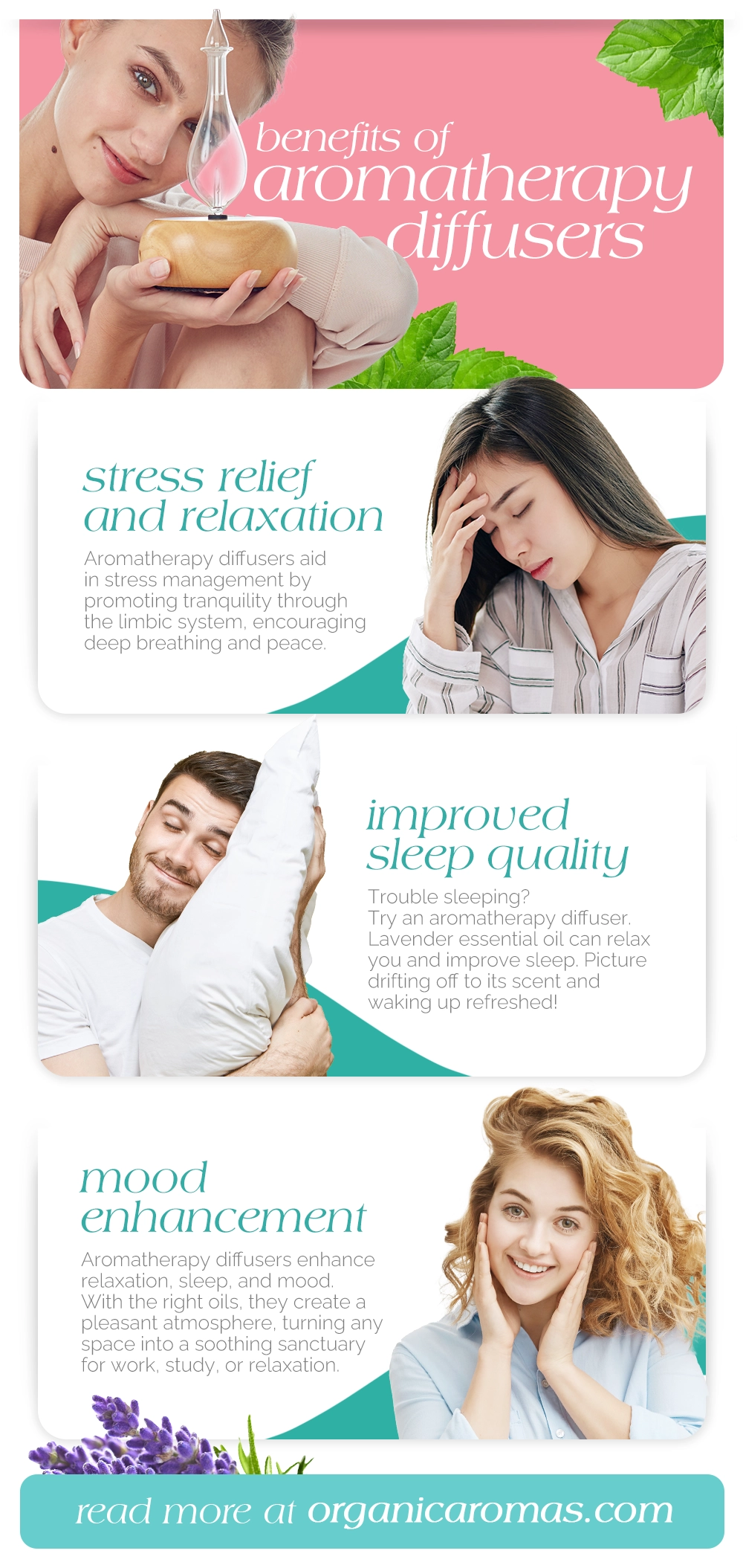
Choosing the Right Essential Oils
Having understood the workings and benefits of diffusers, the ensuing question is – how should we select the appropriate essential oils? The answer lies in understanding their therapeutic properties and ensuring their quality and purity.
Therapeutic Properties
Essential oils are more than just fragrant liquids; they’re packed with healing properties. For centuries, these oils have been used in traditional and folk medicine. Some common, therapeutic qualities and properties of essential oils, including citrus essential oils, are:
- Lavender: calming and relaxing
- Peppermint: energizing and invigorating
- Eucalyptus: respiratory support and decongestant
- Tea Tree: antibacterial and antifungal
- Lemon: uplifting and mood-boosting
Understanding these therapeutic properties can help you choose the right essential oils for your needs.
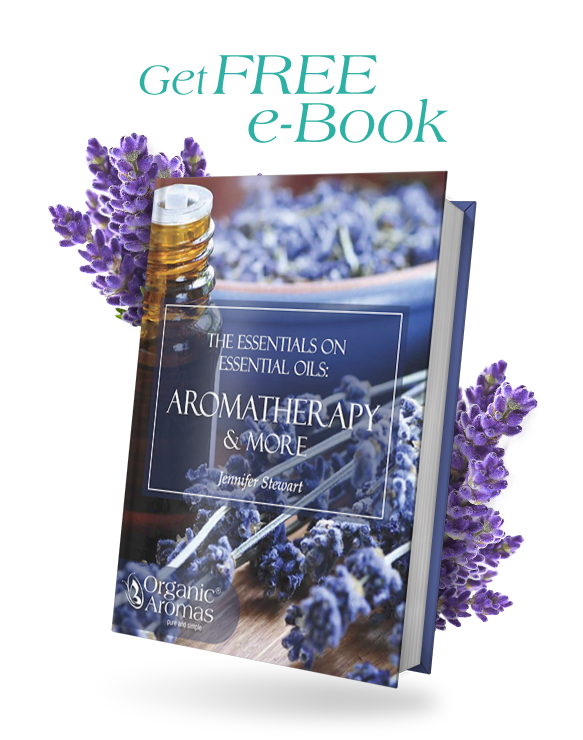
Sign Up to Get Your FREE
e-Book Here…
Please enable JavaScript in your browser to submit the form
Quality and Purity
Quality and purity are crucial factors to consider when choosing essential oils. Here are some guidelines to help you select high-quality essential oils:
- Look for oils that are derived from organically grown plants.
- Make sure the oils are free from synthetic ingredients and contaminants.
- Opt for pure essential oils, as impurities can alter the oil’s properties and effectiveness in aromatherapy.
- Avoid “Fragrance oils” which are synthetic and contain chemicals. Also, be aware that some essential oils, sometimes called “Absolutes” (ilke vanilla for example), can be extracted using a solvent (like alcohol) which could mean your exposure to them should be limited.
By following these guidelines, you can ensure that you are using high-quality essential oils for your aromatherapy needs.
Aromatherapy Diffuser Maintenance and Safety
Regular upkeep of your aromatherapy diffuser, as with any other gadget, is integral for its optimum operation and durability. Besides, ensuring safety precautions is equally important for a safe aromatherapy experience.
Cleaning and Care
Maintaining your diffuser isn’t a complex task. For ultrasonic diffusers, for instance, use a few drops of oil per cup of water for effective dilution without overconcentration. Remember to place your diffuser on a non-fragile surface to prevent any accidental damage or water leakage.
Irrespective of the type of diffuser you own, routine cleaning is indispensable. For most diffusers, a simple wipe down with a damp cloth after every few uses, and a deep clean once a month using water and vinegar or grain alcohol, can keep your diffuser running smoothly and effectively.
Safety Precautions
Prioritizing safety is paramount! It’s crucial to adhere to essential safety guidelines while using diffusers, particularly in the vicinity of children, older folks, pregnant women and pets. Keep essential oils out of reach to prevent accidental ingestion or exposure.
If you’re new to essential oils, pregnant, have a specific physical condition (like kidney troubles) or considering using them for children or pets, it’s advisable to seek advice from a certified aromatherapist or doctor. This can ensure safe usage and prevent potential side effects such as skin rashes, digestive issues, or hormonal imbalances.
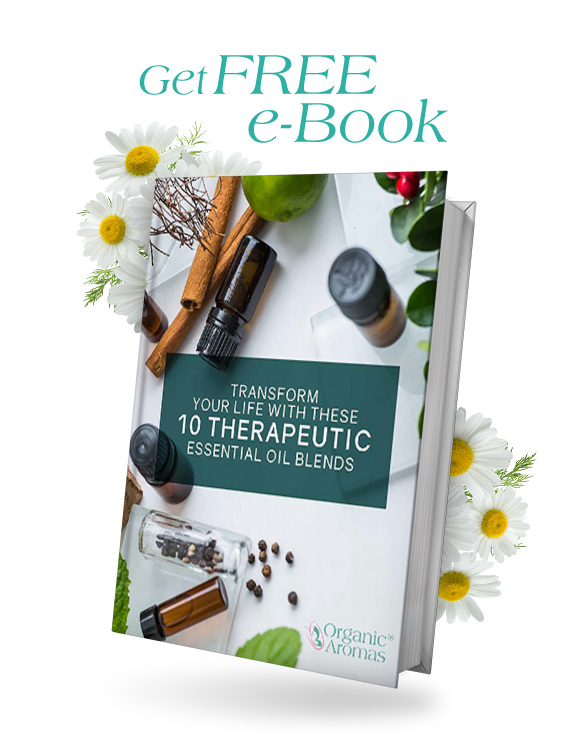
Sign Up to Get Your FREE Essential Oils e-Book Here
Please enable JavaScript in your browser to submit the form
How Do Aromatherapy Diffusers Work: A Summary
As we conclude our aromatic journey, it’s clear that aromatherapy diffusers are much more than just devices to make our spaces smell good. From their intricate working mechanism to the myriad of health benefits they offer, these devices are truly a treasure trove for those seeking holistic well-being. So, let’s embrace this age-old practice and fill our spaces with the soothing scents of nature.

